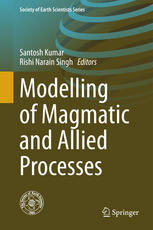

Most ebook files are in PDF format, so you can easily read them using various software such as Foxit Reader or directly on the Google Chrome browser.
Some ebook files are released by publishers in other formats such as .awz, .mobi, .epub, .fb2, etc. You may need to install specific software to read these formats on mobile/PC, such as Calibre.
Please read the tutorial at this link: https://ebookbell.com/faq
We offer FREE conversion to the popular formats you request; however, this may take some time. Therefore, right after payment, please email us, and we will try to provide the service as quickly as possible.
For some exceptional file formats or broken links (if any), please refrain from opening any disputes. Instead, email us first, and we will try to assist within a maximum of 6 hours.
EbookBell Team

4.0
46 reviewsModeling of Magmatic and Allied Processes presentsmethods and models for the quantification of geological processes. Conceptual models for magmatic differentiation involving crystallization and mixing are presented and applied to field and textural data. Model equations for the degree of partial melting in presence perturbations of lithospheric geotherms and partitioning of trace/radioactive elements in the matrix and melts, and the formation of continents with melt additions are described. Diverse magmatic products are shown to result from differentiation processes rather than magmatic source heterogeneities. The degree of partial melting depends on mantle temperatures, for which parameterized thermal convection models are reviewed. Perturbations in geotherms caused by mantle heat flow, CO2 flux from great depths and tectonic thrusting are analyzed. The petrogenetic significance of accessory minerals of felsic magma evolution is assessed with the help of examples from Carpathian granitoids. Methods for simulating the 3-D Concentration and Distribution Models (DC-DMs) and fractal dimension of evolving magma systems are described with examples. The use of conventional scanning electron microscopy methods and electron microprobe to characterize and infer magmatic processes is explained, and the background and economic potential of hydrothermal systems are examined. The nature ofoxidizing felsic magmas along with their potential for copper mineralization is discussed. In closing, the handling, calculation and plotting of geochemical data for igneous rock suites using the R-language-based software Geochemical Data Toolkit (GCDkit) along with plug-in modules for the forward and reverse mass-balance calculation of fractional crystallization are demonstrated.